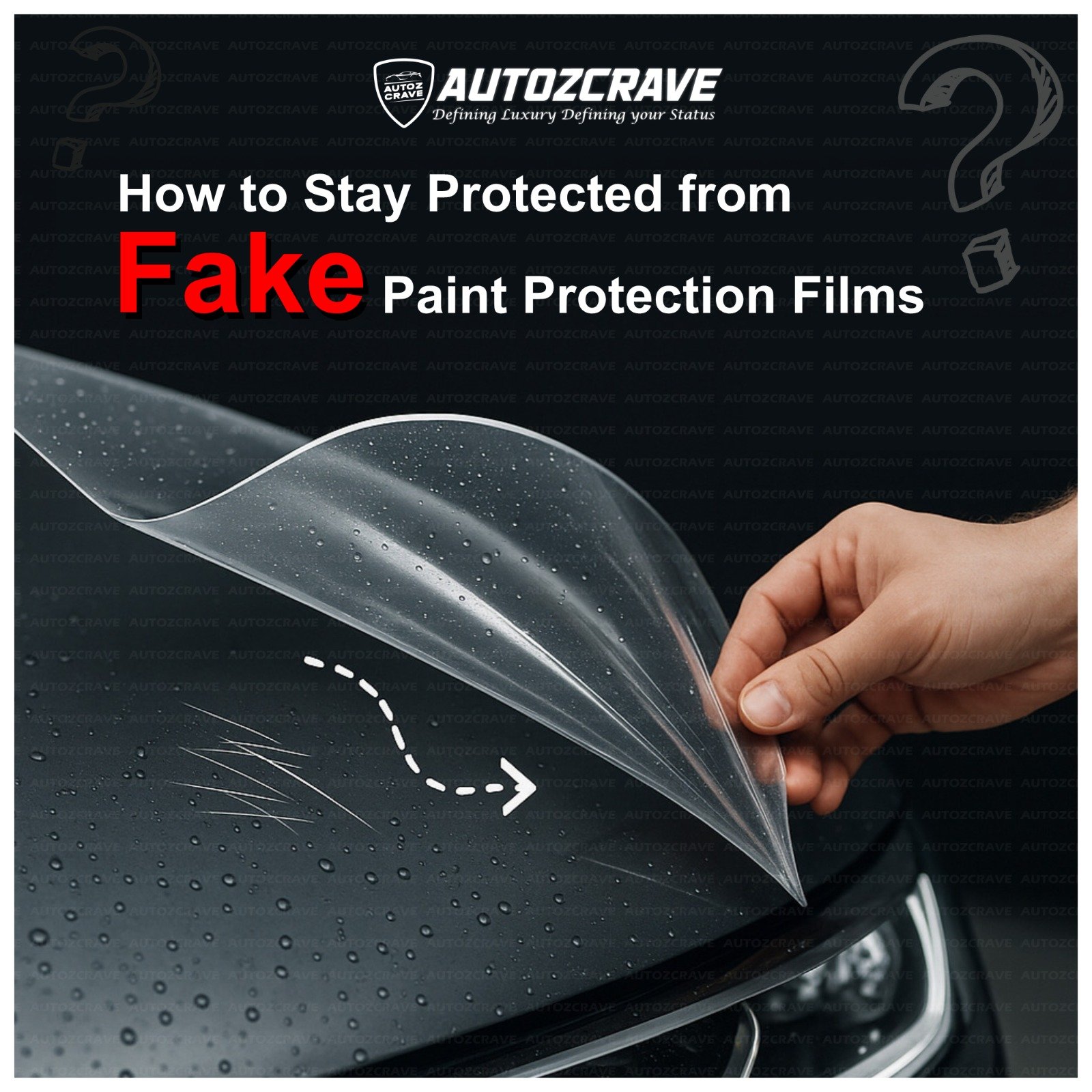Home Blog Details


Home Blog Details


Post By Autozcrave || 2025-06-20
In today’s car care industry, Paint Protection Film (PPF) has become a popular choice among car owners who want to maintain that “new car” shine and protect their vehicle from scratches, stone chips, and UV damage. But with its growing demand, there's also a rise in fake paint protection films in the market. These low quality, counterfeit PPF not only fail to protect your car but can also damage the paint, peel off early, and waste your hard earned money.
So how can you stay safe from this car PPF scam? This blog will guide you through the tips to verify genuine car PPF, how to spot the difference between original PPF vs duplicate PPF, and make sure you're investing in quality, not a cleverly disguised fraud.

With more car owners becoming aware of the benefits of PPF, some local vendors and unauthorized installers are using this opportunity to sell cheap, duplicate products under the name of premium brands. These films often look similar at first glance but fail drastically when it comes to performance, durability, and finish.
That’s why car PPF fraud awareness is important for every car owner looking to protect their vehicle the right way.
Before we dive into the technical stuff, here are some early red flags that can alert you:
If any of these feel familiar, it’s time to walk away and check if the PPF is original before proceeding.
Here are some PPF quality checks you can do before trusting a product:
Genuine PPF brands like Autozcrave, XPEL, Llumar, Garware, and STEK offer serial numbers, barcodes, or QR codes on the film roll or packaging. These codes can be verified through the official brand’s website or mobile app. If there's no code, it’s a red flag.
A genuine PPF will have a thickness between 170 to 215 microns (depending on the brand). Fake ones are usually thinner or too soft, lacking the ability to self heal or offer adequate protection.
Gently scratch the surface with a microfiber towel or your fingernail. Then apply some heat using warm water or a heat gun. If it's original PPF, minor scratches will vanish within seconds. A fake one won’t recover.
Original films offer high optical clarity and shine, almost making it invisible on your paint. Fake films often have a yellowish tint, bubbles, or cloudiness over time.
Let’s break it down for better clarity:
|
Feature |
Genuine PPF |
Fake PPF |
|
Brand Name |
Known, Verifiable |
Unknown or Fake Names |
|
Warranty |
5-10 Years |
No or Fake Warranty |
|
Price |
Reasonable, Reflects Brand Quality |
Very Low, Suspiciously Cheap |
|
Self-Healing |
Yes |
No |
|
UV Protection |
High |
Poor or None |
|
After-Sales Support |
Available via Authorized Dealers |
No support |
|
Long-Term Appearance |
Clear, Glossy, Stays Like-New |
Turns Yellow, Peels Off, Looks Cheap |
If you're serious about car care, you definitely want to go with the original PPF vs duplicate PPF.
Here are practical tips to check if PPF is original when you're getting it installed:
Not just the product, but who installs it matters too. Even a genuine film can fail with poor workmanship. Here’s how to find a trustworthy installer:
PPF is an investment in your car’s long term beauty and value. Don’t fall into the trap of paint protection film scams just to save a few bucks. Use the above tips to verify genuine car PPF, always check documentation, and go only with trusted detailing studios that offer brand backed warranty and support.
Check the PPF roll for a QR code, brand name, or serial number. You should be able to verify it on the brand’s official website. Also, ask for a warranty card and check if the installer is an authorized partner of the brand.
Fake PPF can damage your car’s paint, create bubbles, and fade or peel quickly. It gives you no real protection and might cost more to fix later.
Yes. Real PPF protects your car from scratches, sunlight, and small damages. It lasts for 5–10 years and looks glossy. Fake PPF lasts only a few months and doesn't protect well.
Yes. You can:
Go to shops that are official dealers of known brands. Read their Google reviews, check their social media, and ask for a warranty card and bill with brand name.
Ask these:
Not always, but if someone offers a very low price for a big brand, it’s probably fake. Good PPF is not cheap — it gives you protection, warranty, and better quality.
Yes, but it might damage your paint or leave sticky marks. It’s better to get it removed by a professional.